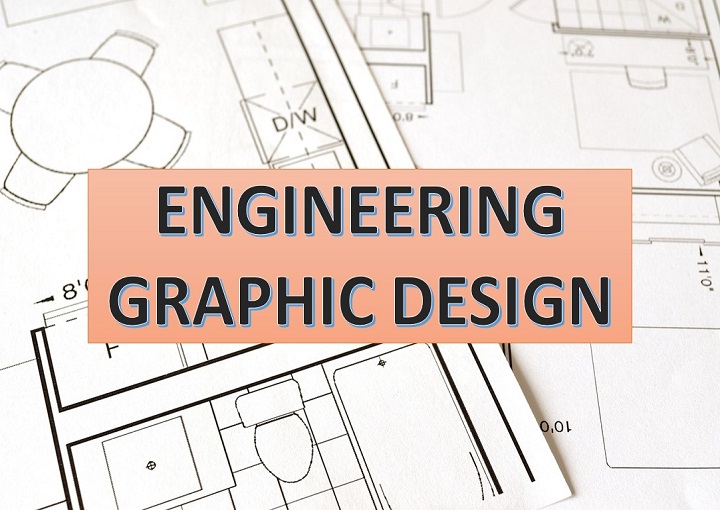Are you interested in learning engineering graphic design? If yes, then you have come to the right place. In this article, we will provide you with a comprehensive guide on engineering graphic design courses, their importance, and benefits. We will cover everything from the basics of engineering graphic design to advanced concepts and practical applications. So, let’s dive in!
1. Introduction to Engineering Graphic Design
Engineering graphic design is the use of graphical representation to communicate engineering concepts and designs. It is a crucial part of the engineering design process and is used to create accurate and detailed drawings of objects, parts, and systems. Engineering graphic design is used in various fields such as architecture, aerospace, mechanical engineering, and civil engineering.
2. Importance of Engineering Graphic Design
Engineering graphic design is essential in the engineering design process as it helps engineers to communicate their ideas and designs more effectively. It enables engineers to create accurate and detailed drawings that can be easily understood by other engineers, clients, and stakeholders. Engineering graphic design is also important in the manufacturing process, where it is used to create production drawings and models.
3. Benefits of Learning Engineering Graphic Design
Learning engineering graphic design has numerous benefits. It enhances your communication skills, improves your ability to visualize and create designs, and makes you more proficient in using various design software. It also increases your job opportunities and career prospects.
4. Basic Concepts of Engineering Graphic Design
Some of the basic concepts of engineering graphic design include sketching, orthographic projection, isometric projection, perspective drawing, and computer-aided design (CAD). Sketching involves creating a rough drawing of an object or design, while orthographic projection is used to create detailed 2D drawings of objects. Isometric projection is used to create 3D drawings, while perspective drawing is used to create realistic 3D views of objects. CAD is used to create digital drawings and models.
5. Tools and Software Used in Engineering Graphic Design
There are various tools and software used in engineering graphic design. Some of the commonly used tools include pencils, rulers, compasses, and protractors. Software tools used in engineering graphic design include AutoCAD, SolidWorks, and SketchUp.
6. Applications of Engineering Graphic Design in Various Fields
Engineering graphic design has numerous applications in various fields. It is used in architecture to create detailed drawings of buildings and structures. In aerospace, it is used to create detailed designs of aircraft and spacecraft. In mechanical engineering, it is used to create detailed drawings of machine parts and systems. In civil engineering, it is used to create detailed drawings of bridges, roads, and other infrastructure projects.
7. Advanced Concepts in Engineering Graphic Design
Some of the advanced concepts in engineering graphic design include 3D modeling, finite element analysis (FEA), and computational fluid dynamics (CFD). 3D modeling involves creating digital models of objects and designs, while FEA is used to analyze the strength and durability of structures and systems. CFD is used to analyze the flow of fluids and gases in various systems.
8. Tips for Learning Engineering Graphic Design
Learning engineering graphic design can be challenging, but with the right approach, you can master it. Some tips for learning.
-
- Start with the basics: Begin by learning the fundamental concepts of engineering graphic design, such as sketching and orthographic projection.
-
- Practice regularly: Practice is crucial when learning engineering graphic design. Make sure to practice regularly and create a portfolio of your work.
-
- Use online resources: There are numerous online resources available that can help you learn engineering graphic design, such as tutorials, videos, and online courses.
-
- Work with others: Collaborate with other students and professionals in the field to learn new techniques and gain valuable feedback.
-
- Attend workshops and conferences: Attend workshops and conferences to learn about the latest trends and developments in engineering graphic design.
9. Career Opportunities in Engineering Graphic Design
Learning engineering graphic design can open up numerous career opportunities in various fields, such as architecture, aerospace, mechanical engineering, and civil engineering. Some of the job titles that you can pursue include:
-
- CAD Technician
- Graphic Designer
- Mechanical Engineer
- Architect
- Civil Engineer
10. Conclusion
Engineering graphic design is a crucial part of the engineering design process and has numerous applications in various fields. Learning engineering graphic design can enhance your communication skills, improve your ability to visualize and create designs, and increase your job opportunities and career prospects. By following the tips provided in this article, you can master engineering graphic design and pursue a successful career in this field.
11. FAQs
1. What is engineering graphic design?
Ans. Engineering graphic design is the use of graphical representation to communicate engineering concepts and designs.
2. Why is engineering graphic design important?
Ans. Engineering graphic design is important in the engineering design process as it helps engineers to communicate their ideas and designs more effectively.
3. What tools and software are used in engineering graphic design?
Ans. Some of the commonly used tools include pencils, rulers, compasses, and protractors. Software tools used in engineering graphic design include AutoCAD, SolidWorks, and SketchUp.
4. What are the career opportunities in engineering graphics design?
Ans. Some of the job titles that you can pursue include CAD Technician, Graphic Designer, Mechanical Engineer, Architect, and Civil Engineer.
5. how to learn engineering graphic design ?
Ans. You can learn engineering graphic design by starting with the basics, practicing regularly, using online resources, working with others, and attending workshops and conferences.

